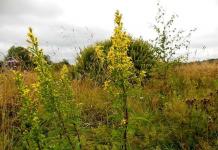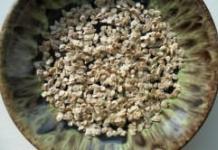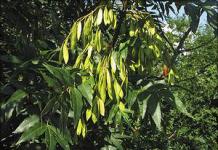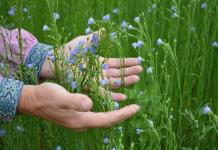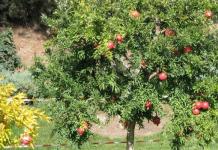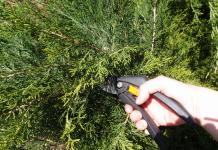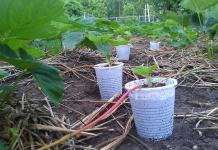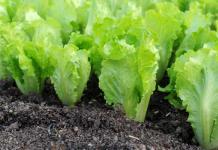Tomatoes, though not the most whimsical plants in the garden, can also cause a lot of trouble. Increased susceptibility to diseases, exactingness in the composition of fertilizers, temperature and humidity, all this makes caring for them a little difficult. But it happens that everything seems to be in order, the plant does not get sick, it is fertilized, but it just does not bloom. For what reason tomatoes do not bloom and how to deal with it, you will learn from this article.
Why, nevertheless, tomatoes do not bloom despite the fact that all the conditions for their fruitful development have been created? There may be several reasons. Firstly, overfeeding the plants with fertilizers, then they actively increase the green mass, but at the same time do not form inflorescences. Secondly, the lack of nutrients, when the plant simply does not have the strength to bloom. Thirdly, temperature drops or too high a temperature at which the inflorescences are sterilized. Fourth, illness.
The list is endless, so let's take a better look at some of the options and see what to do in each case.
seedling quality
The quality of seedlings and seeds plays a very important role. It is possible that the manufacturer has acted in bad faith in the storage, packaging or processing of seeds, and now they are not suitable for fruitful cultivation. To avoid this option, be sure to check the seeds before planting for germination, and also disinfect them.
fertilizers
If the seedlings have grown into large and beautiful, thick, green bushes, but there are still no ovaries, you may have overdone the nitrogen fertilizers. As you know, nitrogen stimulates greening of plants, but at the same time it does not contribute much to flowering and fruit formation. You can deal with this by adding sawdust to the soil, which will absorb some of the nitrogen fertilizers, and in a few days you will see how your tomatoes bloom.
It so happens that the reason lies in the lack of fertilizer. Tomatoes without phosphorus and magnesium are especially affected. Try to maintain the balance of substances in the soil throughout the season. Alternatively, use a yeast fertiliser, so that the plant receives a safe dose of fertiliser.
Remember that you need to feed a tomato no more than 4 times during the entire season.
Air temperature
It often happens that tomatoes do not bloom due to too low temperatures if they are in open ground. At the same time, too high a temperature in the greenhouse can also lead to tomato infertility. A comfortable range of air temperature from 16 to 30⁰С, higher or lower, puts tomatoes in a state of stress in which they do not bloom. What to do in this case?
When tomatoes grow in a greenhouse and suffer from high temperatures, it is worth ventilating the room as often as possible, covering it from sunlight and creating shade. If the temperature, on the contrary, is too low, then the room should be insulated, for example, by laying rotted manure in the spring as biofuel.
If the temperature in the greenhouse is too high at night, then this may also be one of the reasons why the bushes do not bloom: they spend all their energy on breathing. Again, you should ventilate the room or install water containers that will take some of the heat onto themselves, as well as maintain air humidity in the greenhouse.
lack of lighting
Tomatoes do not tolerate either an overabundance of sunlight or its lack. It is important to maintain a balance between the first and second. Most likely, the lack of light lies in the excessive planting density, shaded bushes do not bloom, because they “do not see” the meaning and light. Stabilize and thin out the tomato rows thoroughly to give more room to grow. Most likely, after this procedure, the tomatoes will bloom. Thinning is necessary every few weeks to keep the beds from turning into a thicket.
Weather
Sometimes plants do not bloom due to bad weather. If on the eve of the flowering period it was rainy and cloudy, this is the reason. The thing is that the pollen becomes too heavy, and pollination becomes impossible. In this case, you will have to make a solution of boric acid and spray the bushes to attract insects that pollinate the plants. If tomatoes grow in a greenhouse, then insects will not help. What to do in this case? Shake bushes with your own hands to help them pollinate.
Weak root system
An undeveloped root system is a sentence for flowering tomatoes. Why roots do not develop well and what to do? First of all, regularly pinch and pinch, remove damaged and yellowed leaves. Mulching the soil will help to cope with the trouble. Make sure that the plant receives enough moisture and nutrients.
Diseases
Finally, the last of the options that answers the question "why" - diseases. The tomato is a culture sensitive to fungal diseases, so if you have not carried out prophylaxis against late blight, the tobacco mosaic virus, then this is one of the possible reasons for the lack of flowering of the tomato. Infected plants cannot remain in the greenhouse, so they should be removed, and the remaining ones should be carefully treated with antiseptic and antifungal drugs.
Video "Tomato flowering and fruiting stimulator"
Related Articles
You can take any complex fertilizer, but add ash or potassium magnesia to the aisles. Foliar top dressing with microelements during flowering is also very useful. For tomatoes, a solution of boric acid is used, since boron promotes fruit set.
Seed treatment before sowing

The main assistants in the fertilization of tomato flowers are ordinary bees or bumblebees. The presence of insects in a greenhouse is vital, since air circulation is limited or completely absent. Hydroponics is used for artificial pollination of tomatoes.
- With sharp fluctuations in temperature or its increase in the daytime above 30 ° C, it is necessary to spray flowering inflorescences with Tomato, which is able to provide artificial fruit formation. An important condition for growing tomatoes and getting a decent harvest is the organization of ventilation in the greenhouse. The lack of intensive respiration in plants leads to a decrease in ovaries and a decrease in the quality of tomatoes. On hot, sunny days, it is necessary to organize airing no later than 8:00.
- The first top dressing is carried out 12-14 days after planting the seedlings in the soil when the ovaries are formed on the first inflorescence. Top dressing is carried out using "Yara Mila Complex" - 30 g per 1 m², "Kemira-universal" - 80 g per 1 m² or "Sotka-universal" - 60 g per 1 m². 12 days after the first top dressing, a second one is carried out, during which 30 g of Yara Mila Complex is applied per 1 m². The third feeding takes place 13-15 days after the second, using 25 g of Yara Mila Complex per 1 m². To obtain large fruits, experts recommend immediately after the formation of the ovaries to carry out the processing "on the sheet" with a solution of "Benefit" - 60 ml per 10 liters of water and repeat the procedure 2-3 times every 10 days. To speed up ripening, improve the color of tomatoes, increase their sugar content, transportability will help treatment with the "Svita" solution - 30 ml per 10 liters of water. Foliar top dressing of seedlings with a solution of "Speedfol Amino CalMag" - 30 ml per 10 liters of water will help prevent yellowing of the leaves at the time of fruit filling.
- After the appearance of 30% of seedlings, the covering film is removed from the surface of the boxes, and the boxes are exposed to light. The moment of opening of the cotyledons indicates the need to reduce the temperature to 18-20°C in the daytime and 15-16°C at night. Such actions will help protect the seedlings from stretching. After 7-10 days, the temperature is raised during the day to 20-22°C, at night to 17-18°C. If the process of growing seedlings did not take place in cassettes, then with the appearance of the third true leaf, the seedlings dive into pots with a diameter of at least 8 cm, filled with soil mixture. Dive tomato seedlings can also be carried out on racks with soil, 10 cm high. Transplanted tomato seedlings are watered with a 0.1% Extrasol-55 solution and placed in the shade for 1-2 days for successful, quick rooting. If the soil has not warmed up to a temperature of + 15 ° C, do not rush to dive seedlings into it. The root system of tomatoes at temperatures below 15 ° C practically does not function.
- Tomatoes in the greenhouse should be lit by the sun from morning to evening, any shade reduces the yield. Tomatoes are very photophilous plants. Tomatoes are not afraid of cold weather. The greatest enemies for these plants are frost and dampness. Therefore, you should not forget about ventilation in the greenhouse. With the onset of stable sunny weather, the greenhouse can be opened on 1/3 of the upper part of the end sides. On hot days, you can open the entire western part of the greenhouse before cold snaps. Such actions will contribute to good ventilation and access of bees during the flowering period.
The next top dressing is carried out 15 days after the second transplant. To prepare the feeding composition, take 1 tablespoon of superphosphate and potassium sulfate and dilute it in 10 liters of water, while stirring thoroughly. One pot should be watered with 1 cup of the resulting solution. After 15 days, re-feeding is carried out.
The yield of tomatoes directly depends on the correct care of the seeds.
Tomato is perhaps the most long-awaited and beloved fruit-berry on our table. Juicy appetizing tomatoes were brought to Europe from South America. Tomatoes were grown in the old days as a decorative ornament, and only later they began to appear on the tables of wealthy rulers.

Most people, including me, try to avoid chemicals and use organic fertilizers - they are not only the best, but also safe. Use ashes, chicken manure and various weeds. If this is not possible, then you will have to purchase different fertilizers in the store.
When the first brushes bloom, watering is carried out with diluted potassium permanganate, together with 25 g of superphosphate and 20 g of potassium sulfate (per 10-liter bucket of water).
This type of technique is effective when it comes to industrial level or in case of high planting density. In addition, for growing greenhouse crops, you can use the following method: at the time of flowering, shake the plants daily at noon to distribute pollen. The weather should be dry and warm, after a while, lightly sprinkle it so that pollen sticks to new inflorescences.
Seedling care: temperature, watering, fertilizing
Varieties of tomatoes react differently to the appearance of certain diseases. Whatever varieties you choose, a number of preventive work will help to avoid the occurrence of diseases and protect young plants from illness and death. To prevent fungal diseases 2 weeks after planting the seedlings in a permanent place, spray the bushes with a copper-containing fungicide - 70 g of "Ordan" or "Kurzat R" per 10 liters of water. Processing is carried out at intervals of 12-15 days. Secondary treatment is recommended to be carried out with a systemic fungicide: "Strobe" - 2 g per 10 l of water, "Thanos" - 20 g per 10 l or "Kvadris" - 6 ml per 10 l of water. Systemic fungicides are highly effective in the prevention and treatment of fungal diseases:
Growing juicy and tasty tomatoes in a greenhouse is hard to imagine without properly organized watering. Among the main recommendations to remember are the following: A key role in the growth of fruits is played by fertilizing the soil when planting tomatoes. Growing tomatoes in greenhouses makes it difficult for bees to access the flowers, making pollination less efficient. You can also pollinate tomato flowers manually by gently shaking the inflorescence brushes. Shaking the flowers is done every 3-4 days in warm sunny weather. In order for pollen to germinate on the stigma of the pistil, pollination must be accompanied by spraying the flowers with water. After spraying, the greenhouse is ventilated to prevent overmoistening of the soil and air, since an increase in moisture reduces the taste of fruits and the sugar level in tomatoes.

Before planting, the seedlings begin to harden. It is taken out to the balcony at a temperature not lower than 12 ° C, covered with a film at night.
Seeds are hardened in the refrigerator for 1-2 days at a temperature of + 1 ° C, periodically spraying them with water. After all the procedures, the seeds are immediately sown in the soil.
Tomato seedlings begin to be planted in early spring, then after a month or two they are hardened, and in late spring, early summer they are planted in a greenhouse.
You can feed the tomatoes with mullein infusion. Tomatoes love this fertilizer very much. For 10 liters of water, 1 liter of mullein infusion is used.

To speed up flowering, iodine is used, and thanks to this technique, the yield of tomatoes increases. To feed plants in the flowering phase, 30-40 drops per bucket of water will be required.
It is not uncommon for tomatoes in a greenhouse to be affected by the same diseases from year to year. To avoid this situation, regardless of the chosen growing technology and variety of tomatoes, it is necessary to take measures for the autumn preparation of the greenhouse for new seedlings.
During the growing process, do not water the seedlings with cold water, its temperature should not be lower than 16 ° C. Make every effort to keep the plant dry and water directly into the root system.
Planting tomatoes in the ground

If the picking of tomato seedlings is carried out directly into the soil of a greenhouse or greenhouse, during transplantation it loses 50-60% of the roots. As a result, seedlings take root poorly, its growth and development stops. To improve the survival of seedlings a week before transplanting, cut the greenhouse soil to a depth of at least 10-12 cm with a knife in two perpendicular directions and spill it with a solution of Speedfol Amino Marine at the rate of 30 ml per 10 liters of water.
Pollination by hand is used as an additional method, the best way to cope with pollination, no doubt, is bees. Pollination with the help of bees greatly increases the yield, as tomato pollen is sticky, which prevents the flowers from pollinating themselves. Tomato flowers do not have nectar and smell, therefore, to attract bees, the latter are “trained”. Pollination of tomatoes is carried out by bee colonies pollinating cucumber flowers. The hives with bees are transferred to greenhouses with flowering tomatoes and the insects are fed with syrup flavored with tomato flowers. Thus, the bees will work intensively in the tomato greenhouse. However, with the flowering of other fragrant honey plants, bees may defect to them. To prevent this from happening, tomatoes should be grown so that they begin to bloom before other pollen-bearing flowers.
To grow a strong bush, the upper part of the plants is cut off. Shoots appear from the axils of the lower leaves - stepchildren. The two upper stepsons are left, the rest of the lower ones are removed. Thus, the plant is formed into 2 shoots, which, when planted in the ground, will be tied to the trellis. The pinching procedure is performed 20-25 days before planting in the ground.
Tomato seeds are sown from February 5 to February 25 in boxes, each variety separately. The soil for growing seedlings is prepared as follows: take 1 part of sod land, peat and humus. A liter jar of river sand, 1 tablespoon of superphosphate and the same amount of wood ash are added to the finished mixture.
Now tomatoes are grown not only by professional agronomists, but also by amateur gardeners. Taking this issue seriously, you can achieve excellent results if you grow tomatoes in a greenhouse. Caring for these wonderful fruits is quite an interesting and time-consuming process. To get a good crop of tomatoes in a greenhouse, you need to prepare the seeds for sowing, dive the seedlings in time, water them correctly, maintain the appropriate temperature, ensure good pollination of the flowers, and feed the plants in a timely manner.
You can feed the tomatoes with Agricola soluble fertilizer. They use both root dressing and foliar dressing (spraying from a sprayer).
The use of heteroauxin - a growth stimulator that increases fruit set during flowering. This method is especially useful in conditions of poor natural light. Dilute heteroauxin at a ratio of 20 g per liter of water and spray each flower brush with a spray bottle, resulting in large-sized fruits rich in vitamin C and sugar.
Flowering and features of pollination of tomatoes
In September, remove tomato bushes from the greenhouse. Often, among experts, there are disputes about whether it is worth pulling out a plant with a root or pruning under the root will be enough. If you are faced with a fungal disease, then it is better to remove the roots, as they may be infected.
"Ordan" or "Kurzat R" - 60 g per 10 liters of water;
The presence of a substrate that is too dry can provoke the appearance of phytophthora.
early harvest
Numerous new roots will appear in places of cuts, allowing seedlings to take root in a permanent place. For the future harvest, it is very important to observe the modes of humidity, temperature and light. At the initial stages of seedling growth, the air temperature is maintained on sunny days within 20-22°C, at night 15-17°C. After the appearance of 4-5 leaves, the temperature should be reduced to 18-20°C during the day and 13-14°C at night. 2 weeks before transplanting to a permanent place, the temperature is lowered to 16-18 ° C.
Many agronomists use a little secret to attract pollinating insects to the greenhouse: hang a container with jam, honey or other sugary treat at the open entrance. The smell of sweets will attract bees, which will subsequently start pollinating tomatoes in the greenhouse.
ParnikiTeplicy.com
Greenhouse affairs: growing tomatoes
Before planting seedlings in a permanent place, at the end of April, they begin to harden it. On warm days, seedlings are taken out to the balcony at a temperature not lower than 12 ° C, covered with a film at night. Hardened healthy seedlings have a bluish-purple hue.

The resulting mixture is thoroughly mixed 6-7 days before sowing, then distributed evenly into seedling boxes. Grooves are made in boxes with earth, the depth of which is 1.0-1.5 cm. The distance between the grooves should be at least 5-7 cm. The rows are watered with a solution of sodium humate, the temperature of which is 35-40 ° C. Seeds are sown in prepared rows. The distance between future plants should be at least 1.5-2.0 cm. The grooves fall asleep without watering from above. Boxes with crops are placed in a warm, bright place, with an air temperature of 22-24 ° C. In order for the plants to begin to sprout faster, it is recommended to cover the boxes with a film.
Seed processing for sowing is carried out in 4 stages:
Planting seeds and caring for them

You can feed with a solution of boric acid. This, by the way, will help increase productivity.
When shedding flowers, stir a spoonful of boric acid in a bucket of water. This fertilizer consumption corresponds to spraying an area of 10 square meters. m.
It is also necessary to remove plant debris: mulch and weeds.

"Acrobat" - 50 g per 10 l;
Do not allow excessive moisture at the initial stage of growing tomatoes, which can cause a number of diseases of the root system.
Properly grown seedlings are planted vertically and buried in the soil to a level between the first true and cotyledon leaves.
Secrets of growing tomato seedlings
To get early tomatoes, seedlings begin to grow as early as possible. Usually, in tomatoes, depending on the variety, the interval between germination and fruit ripening is 120-130 days. Improving external conditions: good light, sufficient heat and moisture, good soil composition, timely top dressing, proper care - will help to grow a tomato crop 10-20 days earlier. Earlier seedlings have time to grow stronger faster and give more yield than young and fragile ones. When sowing seedlings, it is important to consider the area where the plants will be grown. In the northern regions, where a short cold summer prevails, seedlings should be sown 70-80 days earlier. At the same time, artificial lighting and the necessary temperature conditions are used. Seedlings ready for planting should have 8-12 leaves and one or two inflorescences, while the plants themselves should reach a height of 20-35 cm. control humidity and temperature. The temperature during the day should be maintained at 16-18 ° C, and at night - 13-15 ° C. Such care must be provided before the appearance of the second leaf on the plant, within 30-35 days from the start of germination. During all this time, seedlings need to be watered only 3-4 times. This is due to the fact that during the period of low light, which falls in March, excessive soil moisture will provoke excessive elongation of seedlings. Seedlings should be watered with warm water, at a temperature of 20 ° C under the roots, without falling on the leaves.
Fertilizing tomatoes in the greenhouse

Tomato seeds require preliminary preparation before planting.
You can use the drug "Ovary", which is used to increase the number of ovaries. Use it as a foliar top dressing.

During the flowering period, tomatoes are well fed with organic fertilizers. Feeding must be prepared in advance. To do this, weeds collected in your own garden (nettle, quinoa, wheatgrass and everything that grows) are placed in a large container, add ash, bird droppings (1 part droppings to 15 parts water), manure (1 part manure to 10 parts water). If there is no bird droppings and manure, you can limit yourself to grass and ash. Mix everything and leave to infuse and ferment for a week. Mix again before use. Water at the rate of 1 liter per plant. You can also use mineral fertilizers, such as phosphate, saltpeter, ammonia, but this is chemistry, you can do without it.
Any top dressing should be used in liquid form, because this way nutrients are more actively absorbed by plants and soil.

Regardless of which method of growing tomatoes was chosen, after harvesting them, densely sow the entire area with radish oilseed or white mustard. During the growing season, these plants release a substance that can destroy pathogens of fungal diseases. In the spring, repeat the procedure by combining mustard with legumes (peas, vetch) or cereals (rye, oats) crops.
"Ridomil-Gold" - 25-40 g per 10 liters of water.
Features of watering tomatoes in a greenhouse
Before the flowering of the second brush, the roots of the bush should be in a not very humid environment. After that, the amount of moisture is slightly increased, then gradually reduced until the end of the growing season, thereby eliminating the possibility of cracking tomatoes.
- The less the plant loses roots during the transplant process, the higher the survival rate and the more active the initial growth.
- Caring for tomatoes is quite a responsible and troublesome business, but harvesting these beautiful juicy fruits is much more fun and rewarding. After all, tomatoes are famous not only for their excellent taste, but also for the content of vitamins, minerals and many other elements necessary for the human body. Due to the content of potassium, iron, folic acid, tomatoes are extremely beneficial for the cardiovascular system, improve the functioning of the gastrointestinal tract, strengthen the overall tone of the body and improve overall health.
- Caring for tomatoes that are planted in a greenhouse is more complicated. It is necessary to monitor soil moisture and ambient temperature conditions.
- Boxes with seedlings should be turned every day with the other side to the window so that the plants receive enough light.

Warming up the seeds.
During flowering, tomatoes lack nitrogen, so instead of mullein, you can use the preparation "Azofoska".
I fed tomatoes with infusion of dandelion, wormwood and nettle.
Garter of tomatoes in the greenhouse
http://ladym.ru/publ/magija_rastenij/6

Leave the greenhouse open for the winter and do not cover the snow until the beginning of February so that the ground freezes more.
You should also pay attention to contact fungicides:
Hybrid varieties of tomatoes are more resistant to various diseases and pests.
How to win back the harvest from diseases
It is advisable to plant tomato bushes in a permanent place in the evening or on cloudy days, then the seedlings take root better and grow faster. After planting the seedlings in the greenhouse, pour it under the root with clean water, then with a solution of "Radipharma" or "Speedfol Amino Marina" - 30 ml per 10 liters of water. The solution consumption per plant will be 0.5 liters. A week later, repeat the treatment with a lower dosage - 15 ml per 10 liters of water. If the greenhouse is equipped with a drip irrigation system, Radipharm and Speedfol Amino Marine apply according to the same scheme - 60 ml per 100 m² when planting and 30 ml a week later.

Tomatoes (semi-determinate, indeterminate and determinant) in film shelters and greenhouses are grown, as a rule, by the seedling method. Seeds sold in branded packages exclude the possibility of infection with pathogens and pests, do not require pre-sowing preparation. The technology for growing tomatoes in a greenhouse described below is focused specifically on this method.
- Ripe seedlings are planted in a greenhouse in the first half of May. When planting tomatoes, it is unacceptable to plant them in the same place for several years, in order to avoid diseases. You can’t plant tomatoes after potatoes and eggplants, since these crops are of the same nightshade family, respectively, they have the same diseases. If you still have to plant tomatoes after the listed crops, then before planting, remove the top soil from the greenhouse, and then sprinkle the soil with a hot solution of copper sulphate.
- Seedlings should be well ventilated, so boxes with seedlings should not be placed very close to the window glass.
- Seed care when treated with chemicals.
I would not recommend you feed your tomatoes with any industrial preparations, it is best to use some organic type of chicken manure. I know that some gardeners still use ashes for top dressing, but I advise you not to make a solution from the ashes, but simply sprinkle it around the stems, and water as needed. This method will not only feed your tomatoes, but it will also scare away many pests.
- You need to take two good handfuls of nettles, two handfuls of dandelion, two handfuls of wormwood (crushed), put it in a plastic bath, poured it with water, added a pinch of yeast and a glass of ash, mixed everything and insisted for about 10 days.
http://youtu.be/3PNZKCMZhbI
"Polyram" - 80 g per 10 l;
Who will pollinate the tomatoes?

Irrigation of greenhouse tomatoes is carried out in the morning with an interval of 2-3 days, spending 700-1200 liters of water per 100 m² of plantings. For all varieties of tomatoes grown in greenhouses, even a single drying is dangerous.
Autumn preparation of the greenhouse
To grow good fruits in a greenhouse, they make ridges, the distance between which is 60-70 cm. Humus, peat, sawdust and a little sand are added to the beds as fertilizer. Before planting tomatoes, the soil is watered with a solution of potassium permanganate: for 10 liters of water - 1 g of potassium permanganate.
- The first time, while the seedlings grow in a common box, it is not necessary to feed the soil.
- Soaking in clean water.
- There is nothing better than organic fertilizers. Therefore, it is better to fertilize tomatoes during flowering with ash and chicken droppings.
- After the infusion was ready, I took 1 liter of this infusion and diluted it with 10 liters of water, the smell is certainly not pleasant, but for tomatoes and other vegetables this is a good top dressing.
Let the complex but exciting process of growing fragrant and tasty tomatoes give a long-awaited result and a good mood.
VseoTeplicah.ru
"Bravo" - 100 g per 10 liters of water.
Please note that 2 weeks before harvesting, it is forbidden to organize abundant watering. This warning is dictated by the fact that during this period the root system is weak and subject to various kinds of damage. Proper irrigation technology involves frequent water supply in small volumes. The total amount of water that is necessary for the normal growth and fruiting of a plant ranges from 0.5 liters in cloudy weather to 1.6 liters on hot, sunny days. On heavy loamy and clayey soils, watering is done infrequently (every 2-3 days), since it is able to retain moisture inside for a long time. On light sandy and sandy loamy soils, surface cracking is a problem, as this type of soil is unable to hold water and requires frequent watering.
The method of growing tomatoes involves the application of mineral fertilizers under the root. The procedure is carried out every 10-14 days. Experts recommend feeding tomatoes in conjunction with their watering. 12 days after planting tomato seedlings in a permanent place, it is necessary to fertilize once a week “on the sheet” with a solution of “Speedfol Amino Start”, prepared at the rate of 20-30 ml per 10 liters of water, “Plantofol 10:54:10” also has good recommendations. "- 25-35 g per 10 liters of water. With the beginning of the flowering of tomatoes in the greenhouse, to improve the fertilization of flowers, stop the shedding of ovaries and flowers, increase the brushes and eliminate the top rot of the fruit, the plants are treated “on the leaf” with “Speedfol Amino Flowering and Fruiting” - 30-35 ml per 10 l of water. A mixture of "Boroplyus" - 20 ml with "Speedfol Amino CalMag" - 20-35 ml per 10 liters of water has proven itself well. After 12 days, the treatment is repeated. If the cultivation of seedlings is carried out in hot and dry weather, a third treatment is carried out with a similar dosage.
If the main goal is to get a very early harvest, grow seedlings with a blooming first inflorescence for a period of 40-60 days for indeterminate tomato varieties, and with the first brush formed, but until the opening of the first flower - for determinant and semi-determinant tomatoes. In addition, it is possible to plant seedlings in the greenhouse at the age of 35 days, grown without picking. Tomato seedlings are planted in a permanent place when the soil temperature at a depth of 10 cm reaches +15˚С. The optimal air temperature for the growth and full development of tomatoes in a greenhouse is considered to be 22-25 ° C.
Planting seedlings is done vertically, only a pot with a root is immersed in the ground. The distance between the bushes of tall varieties of tomatoes should be 50x50 cm, while the plants are planted in a row or in a checkerboard pattern. When planting, you should avoid a distance of 80-90 cm from each other: this reduces the yield! This is due to the fact that the free plant branches strongly, that is, all the nutrients will not go to the development of the fruit, but to the deciduous system.
The most important conditions for growth, in the first three weeks, for seedlings are temperature and the required humidity.
Seed hardening.
If neither one nor the other is available, you can buy ready-made solutions with organic salts for feeding in the store.
For 1 bush you need 1 liter of diluted infusion under the root.
Tomato is a self-pollinating heat-loving vegetable. The most favorable temperature for its growth and fruitful development is 23-25°C. A polycarbonate greenhouse is an ideal place for growing, the necessary temperature for the growth of tomatoes will be maintained here, there will be no high humidity, but its required level will be maintained. The plant requires a sufficient amount of light, with a lack of it, the leaves turn pale, the stems stretch, and the formed buds fall off.
WHAT TO FEED TOMATOES DURING BLOSSOMING?
A 1% solution of Extrasol-55 can also become a crop protection. The technology of growing greenhouse plants involves spraying in the budding phase, in the process of flowering of the third brush and when the fruit reaches the size of a walnut. Extrasol-55 is a liquid suspension of phosphorus-fixing bacteria, the main food of which is fungal spores. Cotton scoop is an insect whose caterpillars can destroy up to 50% of the crop.
3 days after planting, the plants are tied with twine to the wire, which must be tensioned in advance at a height of 2.2 m. Tie the lower part of the twine to the plant under the second leaf, the upper part to the wire using the sliding loop method, which allows you to loosen the tension when twisting around the stem. The plants are twisted weekly, the stem of the tomato is wrapped with twine. With the correct garter, one turn should fall on 1.5-2 internodes. Tomatoes of the indeterminate type in greenhouse conditions are formed in one shoot, semi-determinant - in one, less often in two shoots, regularly eliminating lateral shoots (stepchildren).
For tomatoes, it is desirable that the greenhouse be equipped with an irrigation system.
10-14 days after planting, the tomatoes are tied to a trellis. The lower stepchildren are removed, leaving columns of 2-3 cm.
A month later, when two or three leaves appear on the seedlings, the first pick is made - each plant is transplanted into a separate pot. The pots into which tomato seedlings dive for the first time should be 8x8 cm in size. The plants will develop there for about 25 days. The soil for pickled seedlings is prepared in exactly the same way as for sowing seeds. Before planting plants in pots, the soil is watered with a solution of potassium permanganate, in the proportion of half a tablespoon per 10 liters of water. When picking, weak and unsuitable plants are culled.
For the rapid growth of seedlings, it is recommended to warm the seeds at a temperature of 45-65 degrees for 3 hours. This procedure can be carried out at the battery or on special heating devices. But the main thing here is to observe the measure: excessively high temperature can damage the structure of the seed.
Tomatoes and other plants in general are best fed and fertilized only with natural products, chemistry should be excluded. Use manure - dilute it in a bucket of clean water in the approximate proportion of one part manure and ten parts water. Stir everything thoroughly and let it brew for a day, stir again before feeding and water under the root.
But after feeding, it is imperative to pour the tomatoes with settled water.
Throw nettles, dandelions, burdocks and other weeds, bird droppings (1:15 to the amount of water) and cow dung (1:10) into a large container, do not forget to mix all the ingredients more often.
The time of abundant flowering of tomatoes is a signal for the second feeding of the plant. Its flowers are small, yellow, five-membered, the inflorescence is collected in a curl (brush). There are many ways to feed tomatoes during flowering, and each summer resident uses only his time-tested method. Some of them will be discussed below:
How to feed tomatoes during flowering?
irians
Insect years fall at the beginning of May, so it is important to take a number of preventive, protective measures. At intervals of 14 days, tomatoes are treated with insecticides: Avant or Carrageenan, Regent, Fury, Arrivo, Fufanon or Fastak. The procedure can be carried out at any temperature, with the exception of Fufanon, which is used at temperatures below +28˚С. From year to year, cases of damage to tomatoes by mites are becoming more frequent. The fight against misfortune can be organized with the help of acaricides or insectoacaricides: Clipper, Talstar, Fitoverm, Aktellik, Omayt. The treatment of tomatoes with fungicides and insectoacaricides is combined with foliar feeding of plants. 
Aleso
At the beginning of ripening, thanks to the foliar dressing "Speedfol Amino Flowering and Fruiting" at a dose of 35 ml per 10 liters of water, it is possible to accelerate the ripening of tomatoes and increase the content of vitamins and carbohydrates in them. In stressful situations, tomato treatments with Isabion or Megafol have the maximum efficiency at a dosage of 20-40 ml per 10 liters of water for open ground seedlings, 20 ml per 10 liters of water for greenhouses. The efficiency of the growing process largely depends on the proper nutrition of tomatoes and the ratio of nitrogen and potassium during plant growth. In greenhouse-type tomatoes, the ratio varies from 2.5:1 to 1.5:1. As close as possible to this ratio of nitrogen and potassium "Kemira-universal", "Sotka-universal", "Yara Mila Complex" and "Sotka-floral" - mineral fertilizers.
Seeds are sown in the first half of February in cassettes or special boxes filled with a loose, breathable, nutritious soil mixture based on peat with the addition of mineral fertilizers and sand, deepening them by 1.5-2 cm. The soil mixture in boxes a week before the moment of direct sowing seeds is shed "Extrasol-55" (0.1% solution) at the rate of 1 tbsp. l. for 10 liters of water. Soil cultivation makes it possible to avoid the disease of seedlings with the "black leg". Cassettes (boxes) after sowing are covered with plastic wrap and placed in a shaded place. Soil temperature, optimal for seed germination, varies between 24-26°C. Due to this temperature and high soil moisture, tomato seeds germinate in 4-6 days.
Before flowering and fruiting, tomatoes are watered every 5-6 days. During the growing season, plant nutrition is especially important. Tomatoes are fertilized with liquid mullein or ready-made fertilizers "Ideal", "Fertility" every 10-15 days. To increase the fruit ovaries, tomatoes are sprayed with a 10% solution of boric acid over flower tassels and leaves.
Dive seedlings are grown at a temperature of 20-22 ° C during the day, and at night - 16-18 ° C. Watering seedlings in pots should be no more than 1 time per week until the soil is well wet. 2 weeks after picking, tomato seedlings are fed with this solution: 1 tablespoon of nitrophoska is diluted in 10 liters of water. For 1 pot there is half a glass of fertilizer.
After warming up, the seeds are treated with chemical solutions to avoid possible diseases of young plants. First, the seeds are treated with a solution of pharmaceutical manganese in the proportion of 1 g of manganese per 1 glass of water. In a cloth bag, the seeds are soaked for 15-20 minutes in the prepared solution, and then washed with water. Then the seeds are soaked in a solution that promotes their nutrition and development. In 1 liter of water, dilute 1 tablespoon of ash, or Ideal liquid fertilizer, or ¼ teaspoon of sodium humate. In one of the prepared solutions, tomato seeds are dipped for 12 hours. Before chemical treatment, it is very important to carefully read the instructions for using chemicals and observe the desired proportions. Since improper care using compounds can cause great harm to human health. 
Elena Lilia
It is necessary to feed a tomato only with organic matter (natural fertilizer) - this is the most beneficial for human health. Use simple plant humus from your garden or manure, but not concentrated, but dilute it with plain water so that it does not destroy the plant itself. You can simply throw rotted plants under the roots and water them in the usual schedule.
Such top dressing should be carried out once every ten days.
D Y M K A
Sprinkle dry mineral fertilizers evenly between rows: 20 g of phosphorus fertilizer, 15 g of 40% potassium salt, 12 g of nitrate, ammonia per 1 sq. m., then sprinkle with earth.
natla
Water the ground or spray the flowers with boric acid diluted in a ratio of 1 g per 1 liter of water.
In the Mitlider method there is no loosening of the soil, weeds rarely appear on the ridges.
Stepchildren are removed at intervals of 3-4 days one at a time, leaving small stumps of 5 mm. After the fruit set of the first inflorescence, remove the leaves of the lower part of the plant. Experts do not recommend removing more than 2 leaves at a time. By the time the fruits of the first brush ripen, all leaves located below it must be removed. After harvesting the fruits of the first brush, remove the leaves before the second. The cultivation technology involves the removal of stepchildren and leaves only in the morning. It is advisable to leave up to 6 fruits in each fruit brush. For the lower three brushes, this rule is mandatory, otherwise the fruits of the fourth brush will be small. You can increase the number of ovaries using the technology of shaking and tapping on flowering brushes, in addition, growth regulators have proven themselves well: Boroplus and Speedfol Amino Flowering and Fruiting.
At soil temperatures below 24 ° C, tomato seeds germinate more slowly or rot.
irishenka
It is necessary to care for tomatoes, observing the humidity of no more than 65%. It should be remembered that tomatoes do not like high humidity. Watering should be moderate in the evening and at the root, since water on the leaves is undesirable, especially on a sunny day. You should also observe the temperature regime in the greenhouse: 20-28 ° C during the day and 15-16 ° C at night.
Barambulechka
After 3-4 weeks, the second picking of the seedlings into large pots, 12x12 cm in size, is carried out. Seedling care after the second picking is the same as after the first. The second pick is necessary to inhibit the growth of plants, since it is necessary to achieve the cultivation of strong resistant plants, and excessive stretching of the stems makes the seedlings fragile and vitally unstable.
After chemical treatment, the seeds are placed in clean water or in a solution of boric acid (0.2 g per 1 liter of water) for 12 hours. It is important that the solutions and water are at a temperature of 24-25 ° C.
chacha777
During the flowering period, it is better not to use chemistry for feeding a tomato, but to give preference to organic matter. It is best to use humus, fill the weeds with any water, add a little ash and let it all ferment for about a week. You can also use chicken manure or manure.
PRAVDA911
When the tomatoes began to bloom, it is important not to overdo it with nitrogen fertilizers. Indeed, in this phase of their development, tomatoes, like all representatives of the plant world, need potash fertilizers for good flowering and phosphorus fertilizers for the formation of fruits. Therefore, when choosing fertilizers for feeding tomatoes during the flowering period, read the composition, potassium and phosphorus should be in proportions greater than nitrogen.
Greenhouse tomato variety 
Everyone knows that tomatoes grown in their own garden are much tastier than those sold in stores and markets. In order for the harvest to please with its abundance, and the tomatoes to be large, juicy and tasty, the plants need to be provided with proper care and conditions for good development. For good growth, tomatoes need nutrition, because the more abundant the crop, the more nutrients it takes from the soil.
That is why plants need periodic feeding. Tomatoes do not like an overabundance of fertilizers. An imbalance of certain substances in the soil can cause stunting, disease, or dropping of ovaries in the plant.
Fertilizing tomatoes with yeast
- Ordinary nutritional yeast can act as a top dressing for tomatoes. They contain many substances that these plants need. You can fertilize tomatoes 2 times a season. To prepare the product, take 1 sachet of instant yeast, mix with 2 tbsp. l. sugar, warm water (a small amount), after insisting for a couple of hours and mixed with 1 bucket of water. This composition is used when watering plants as follows: 0.5 liters of solution will be needed for 1 watering can of water. The effect will be visible after 3 days: the tomatoes grow rapidly, and the leaves and stems become stronger. raw yeast (pre-dilute with water). Pour everything with warm water, close the lid and put in a large saucepan (the solution will pour out of the container during fermentation). The mixture should ferment for at least 3 days. After it, you need to strain and water the tomatoes in the following proportion: for 10 liters of water, 1 liter of solution.
- No Silicone: Breast Enlargement Cream
Top dressing of tomatoes in the open field during flowering
Many novice gardeners do not know exactly what products to use to fertilize tomatoes during flowering. Caring for seedlings in the open field requires a lot of time and effort.
Top dressing is used in cases where the seedlings were planted in, which was not fertilized in advance. Usually, the seedlings develop for about 2 months and during all this time the plants need food. Particular attention should be paid to the period of formation of the ovary of flowers and the flowering itself.
At this time, you can use both simple mineral fertilizers, such as urea, superphosphate, ammonium nitrate, and complex ones designed specifically for tomato seedlings - diammophos, nitroammophoska, kemira, etc. It is convenient to use special nutrient boxes and pots that are filled with a substrate, soil mixture with essential organic matter. You can use a solution of mullein or chicken droppings as fertilizers, and during flowering, it is useful to sprinkle the inflorescences themselves with a boron solution. Such an element as phosphorus important at all stages of development and formation of tomatoes.
It is responsible for the proper development of the roots and helps to activate the processes of fruit set. The first top dressing should be done 21 days after transplanting.
To do this, you need to make a solution: for 10 liters of water, 0.5 kg of liquid mullein and 1 tbsp. l. nitrophoska. The following dressing is done during the blooming of brushes with flowers. To do this, it is better to use ready-made fertilizers for tomatoes during flowering, for example, such as Senor tomato - 1 tbsp. l. this drug must be diluted in 10 liters of water. You can use mineral fertilizer Tomato Master.
Top dressing of tomatoes in the greenhouse during flowering
Tomatoes that are grown in greenhouse conditions, as well as those that grow in open ground, need regular top dressing. You can fertilize such seedlings from the very beginning of development, immediately after the first leaves have formed.
It is best to choose top dressing for these purposes, which includes many different nutrients. During the flowering of tomatoes, you need to carefully use fertilizers that contain nitrogen. Dose the use of biohumus, granulated compost and other organic fertilizers. They can certainly be used, but the effect will be weak.
Tomato care: pinching
In order for tomatoes to give large fruits and accelerate growth, it is necessary to carry out the formation of the plants themselves. It consists in getting rid of the side trunks that grow between the leaves, they are also called stepchildren. The very first stepchildren are made 3 weeks after planting the seedlings.
During this time, the tomatoes reach a size of 7 cm. After this procedure, you need to carry out this procedure regularly. It is necessary to break out the branches with the thumb and forefinger.
They cannot be torn out, otherwise wounds are formed that heal for a long time, fungal infections can penetrate into the plant through them. If the pinching was done with some delay, then the shoots must be cut with a sharp knife, not forgetting to leave 1 cm near the trunk.
What can happen if you do not feed tomatoes?
- If you refuse to feed, the leaves of the plant will suffer first. They will lose their shape, begin to curl even at the very beginning of growth, and may fall off. This is often due to an excess of nitrogen in the soil, and its deficiency is manifested in the yellowing of the foliage, its stunting and falling off. The most important thing is not to confuse these symptoms with exposure to low temperatures and lack of moisture. You also need to feed tomatoes in greenhouse conditions with phosphorus, because due to its lack, the plant can turn purple. But if the leaves grow normally, then the deficiency of the substance is considered the norm. Less common is a lack of calcium. It is formed more often when cultivating a crop in greenhouse conditions and manifests itself in the form of top rot on the bushes themselves. Feeding seedlings is necessary in a small amount, but often. It is best to use complex fertilizers.
Read also: We list the most significant fertilizers for this crop:
- potassium; phosphorus; nitrogen.
Phosphorus is of great importance for the formation of the root system and fruit set. If plants do not get enough of this substance, then tomatoes do not absorb nitrogen and other necessary nutrients.
The symptoms of phosphorus starvation in tomatoes are the appearance of red-purple spots on the underside of the leaves, as well as the twisting of the leaves along the main vein, and fruit ripening also slows down. This mineral contributes to the formation of stems, as well as the absorption and processing of carbon dioxide.
In case of a lack of potassium, the lower leaves accumulate ammonia nitrogen, as a result of which they first wither, and later die. In the photo you see how the result of potassium starvation of tomatoes appears on the leaves: Let's take a closer look at what and how to feed tomatoes in a greenhouse.
When and what kind of feeding is carried out
The very first top dressing can be carried out in the process of planting tomato seedlings in a greenhouse. Compost or humus is placed in pre-prepared holes and ash is added.
Compost, like humus, contains a lot of minerals, and the ash has a high content of various micro and macro elements that are so necessary for the tomato for normal development, growth, flowering, setting and formation of fruits. The question is how to feed the tomatoes after planting in the greenhouse , causes "hot" discussions among gardeners. Part of the "gardening" community is of the opinion that the question of how to feed tomatoes in a greenhouse immediately after planting is not worth it at all. Such gardeners believe that the first top dressing of greenhouse tomatoes should be carried out no earlier than two weeks after transplanting plants to a permanent place. Other gardeners are of the opinion that for “injured” seedling transplants, tomatoes in a greenhouse should be fed earlier, preferably immediately after transplantation, all the better.
For the first feeding, these gardeners recommend using organic fertilizers, or the so-called "green tea". This fertilizer is easy to make with your own hands. For its preparation, a variety of herbs are taken (various weeds, such as nettle, plantain and others), to which a bucket of liquid mullein and a glass of wood ash are added.
For infusion, 4-5 kg of finely chopped grass are taken for 50 liters of water, mullein and ash are added, mixed and left for several days to infuse. Then bring the volume of the solution to 100 liters. About 2 liters of ready-made infusion are poured under each bush.
Important: mineral dressings carried out at this time by many gardeners have a one-sided effect on plants. Some of them stimulate the active growth of green mass, others enhance flowering. If there are no organic fertilizers, it is better to fertilize tomatoes with any complex mineral fertilizer. So, if you think that the soil in your greenhouse is well fertilized, then you can not do fertilizing after transplanting tomato seedlings. Then, an approximate dressing plan will be as follows:
- The first feeding will be carried out approximately in 15-20 days after plant transplantation. Mineral fertilizers are used for it, diluting them in 10 liters of water:
- 25 g nitrogen; 15 g potassium.
Under each plant spend 1 liter of the prepared solution.
- The next top dressing is carried out at a time when the tomatoes begin to bloom en masse (see Forming a tomato bush in a greenhouse - how to do it right), since it is necessary to feed the tomatoes in the greenhouse for normal fruit set in the future. In 10 liters of water, dilute 1 tbsp. a spoonful of potassium sulfate, 0.5 l of bird droppings and the same amount of liquid mullein. Each plant should receive 1-1.5 liters of the prepared solution.
If there is little or no organic fertilizer, then top dressing can be carried out by dissolving 1 tbsp. a spoonful of nitrophoska in 1 bucket of water. For each plant, 1 liter of working solution is spent. During the flowering of tomatoes, in order to prevent blossom-end rot of tomatoes, it is necessary to spray the plants with an aqueous solution of calcium nitrate. To prepare it 1st. a spoonful of fertilizer is diluted in 10 liters of water.
- During the formation of the ovaries, it is necessary to feed the tomatoes with a solution of 2 liters of wood ash and 10 g of boric acid diluted in 10 liters of hot water. The prepared solution must be insisted for a day so that all the elements are completely dissolved. Such a mixture contains a large number of micro and macro elements that will help the crop to form more quickly. Each plant is watered with 1 liter of the prepared working solution. For this root dressing, 2 tbsp are dissolved in 10 liters of water. spoons of superphosphate and 1 tbsp. a spoonful of liquid sodium humate.
In any case, there is no clear instruction on when, how often and with what fertilizers to fertilize greenhouse tomatoes. Each gardener, knowing what vegetables were grown in the previous season and what fertilizers were used, follows an approximate feeding scheme, “adjusting” to the characteristics of the plants, the vagaries of the weather and relying on their experience.
Foliar top dressing
In addition to the usual root top dressing of tomatoes, it is also useful to use foliar top dressing - spraying the stems and leaves of tomatoes. A feature of foliar dressings is that they are able to convey to the plant the substances it needs, which are lacking in the soil.
This is due to the fact that the leaves, unlike the roots, absorb only the elements that are missing for the plant. If the tomatoes lack some specific elements, how to feed the tomatoes in the greenhouse is decided by foliar feeding the missing elements. Spraying plants with a solution containing deficient substances very quickly gives positive results, which appear literally in a few hours.
If you make the same elements through root dressing, then the result can be seen only after a week or two. During flowering, thinking about how to feed tomatoes in a greenhouse, you can perform foliar top dressing with a solution of boric acid and wood ash extract.Advice: to prepare an extract from wood ash, take two glasses of ash and pour 2-3 liters of hot water.
Infuse for a couple of days, after which the precipitate is filtered. The resulting solution is adjusted with water to a volume of 10 liters, after which the plants are sprayed.
How to fill the deficiency of nutrients
Tomatoes very clearly signal with their appearance exactly what elements they lack (see more Diseases of tomatoes in a greenhouse: their varieties and how to deal with them). External signs of mineral deficiency
- with a lack of phosphorus, the stem, the lower surface of the leaves and the veins on them become purple. If you spray the plants with a weakly concentrated solution of superphosphate, then after a day the purple color disappears. Calcium deficiency leads to the leaf plate twisting inward and the disease of the tomato fruits with top rot. In this case, spraying the plants with a solution of calcium nitrate will help. In the event that the plants do not have enough nitrogen, the plant becomes light green or yellowish, lags behind in growth and becomes very thin. Spraying "herbal tea" or a very weak solution of urea will help to cope with nitrogen deficiency.
You may get the impression that feeding greenhouse tomatoes is too troublesome and unnecessary. It is enough just to fertilize the soil during spring and autumn digging, and then plant the tomato in the greenhouse.
Indeed, if the soil is not depleted and the correct crop rotation is practiced, the harvest can be obtained. But if you carefully look after the plants and promptly respond to their needs, constantly take care of them, you can get a much more abundant and high-quality tomato crop in the greenhouse. task.
Growing tomatoes in a greenhouse
A plentiful harvest is expected from tomatoes - the norm from one bush is at least 3 kilograms, under favorable conditions, 10 or more can be removed. Productivity depends primarily on the variety, and then on the method of cultivation and care.
But even the most prolific variety can be spoiled, yet compliance with agrotechnical rules plays a very important role. Growing tomatoes in a greenhouse has its own subtleties; greenhouse tomatoes require completely different care than ground ones. If you want to try this method of growing tomatoes, or you already have experience, but you are looking for useful recommendations, then this article is for you.
What varieties of tomatoes are suitable for a greenhouse
Tomatoes are divided into determinant and indeterminate varieties. The first ones are compact, form up to 5-6 inflorescences, and after the central stem stops growing, the last flower brush forms on it.
Determinant varieties are considered earlier, they are harvested in a short time. Indeterminate varieties they do not stop growing, they grow and bloom all the time, respectively, and the harvest as a whole gives more, but the fruits ripen later and not evenly. Both are suitable for growing in greenhouses. Also, when choosing a variety, one should pay attention to its other characteristics , such as disease resistance, yield, how well the fruits store, whether they are prone to cracking.
Planting time for tomato seedlings in the greenhouse
Planting seedlings in a greenhouse begins much earlier than planting tomatoes in open ground. But how much earlier - it's up to you, and each case must be considered individually.
Of great importance is what region you are in, what the weather is like and, of course, what kind of greenhouse you have. If this is a serious building with the ability to keep warm inside - this is one thing, but if you call the beds covered with a film a greenhouse, then this is completely different.
In the first case, seedlings can be planted almost all year round, technically it is possible all 12 months, but in deep winter the seedlings grow very poorly and slowly, so it is reasonable to wait for February or March. Seedlings begin to be planted in a film greenhouse in April or even early May.
Before planting check the night temperature in the greenhouse, it should not fall below 15-17 degrees the soil must be warm. The ideal temperature for a tomato is 22-26 degrees, under such conditions, planting should be most of the day.
Preparing the soil
It is necessary to prepare the soil for tomatoes, and it does not matter in which greenhouse you will grow them. The land begins to be prepared in the fall, organic fertilizers are applied to it, for example, compost and mullein, so that by spring they will rot and saturate the soil with nutrients, in particular nitrogen, necessary for active growth.
Phytolamps and result: flowering of tomatoes
The earth is deeply dug up, loosened, weeds, roots are removed and fertilizers are applied, two buckets per 1 m2. From above, the soil can be mulched with peat or sawdust, this will partially prevent the appearance of weeds in the spring. It is good to add wood ash to the soil in the fall.
It is crushed into dust and mixed with soil, 1-1.5 cups of ash is required per 1 m2. This will be enough to grow tomatoes in a mobile film greenhouse. If the greenhouse is stationary, then the soil is treated more carefully.
It is extremely important not only to fertilize it, but also to disinfect it, since most often greenhouse crops, including tomatoes, die from various diseases - fungi, viruses, bacteria, which multiply at lightning speed in a warm and humid environment. Do not reuse greenhouse soil if you are in doubt about the quality of the soil, and you should not use it for greenhouse cultivation either.
With long-term cultivation of tomatoes in a greenhouse, every year the top layer of soil is replaced, for this, 10-15 cm of soil is removed, it is thrown away, since it is there that the concentration of pest diseases is highest. You can send this soil for processing, mix it with bleach and leave it for a year or two.
Also, do not forget that after tomatoes the land cannot be used for growing other crops. Any soil must be treated with fungicides - antifungal drugs, and it is advisable to influence it with high temperature - ignite it in the oven or pour boiling water - this is how they prepare the land for seedlings. Of course, it is quite difficult to prepare the soil for a large greenhouse in this way, so vegetable growers use chemical or bio means.
For example, the earth can be disinfected by spilling it with Bordeaux liquid, potassium permanganate or a solution of copper sulfate. Even for large and stationary greenhouses, you can use the gas disinfection method. For this, special sulfur bombs are needed, they are set on fire and in the process of combustion gases begin to be produced that penetrate the soil and into all secluded corners of the greenhouse.
Gas, reacting with moisture, forms sulfurous and sulfuric acids, which destroy fungal, viral, bacterial infections, snails, slugs, ticks and other pests. In addition to soil they also process the greenhouse itself. If the gas method is not suitable, then bleach can be used.
400-500 grams of bleach is dissolved in a bucket of water, infused for several hours, the contents are stratified and the liquid is drained. It is filtered and used for spraying, whitewashing all structures in the greenhouse, as well as walls and roofs. In spring, fertilizers are also added to the soil before planting seedlings.
It can be rotted manure or compost - one bucket per meter. To this volume of organics add 1 tablespoon of urea and potassium sulfate. You can use any other complex mineral fertilizer at the rate of 1.5 tablespoons per m2.
Planting seedlings in a greenhouse
Time must pass between the end of the soil preparation and the planting of seedlings. The earth must first be well watered and allowed to warm up; tomatoes cannot be planted in wet and cold soil. The beds are arranged so that adult bushes do not interfere with each other.
Too close planting will negatively affect the growth of bushes and the ripening of fruits. Compact varieties are planted at intervals of 35-45 cm, large ones - 55-65 cm, the distance between rows is 60-70 cm and 90-100 cm, respectively. As for open ground, holes for planting tomatoes are dug in advance and poured with plenty of water.
For example, if you formed holes today, then you need to plant tomatoes tomorrow morning or evening. True, in the greenhouse this event can be planned for the day, the active sun will not be able to damage the tender seedlings through the shelter. The seedlings are carefully removed from the container or planted directly in peat pots, the soil around is slightly compacted and mulched with peat.
You can immediately put supports for garter tomatoes. A few days after planting, the tomatoes are not watered. They may become lethargic, but on the second day they should begin to move away.
Watering is carried out when the seedlings come to their senses, it is because of this pause before planting that the wells are abundantly filled with water so that the soil is moist and in deep layers.
Caring for tomatoes in a greenhouse
Top dressing is necessary for all greenhouse crops, and especially for tomatoes. Tomatoes in the greenhouse are fed 4-5 times, this is the only way to get a good harvest. The first time tomatoes are fertilized two weeks after planting.
At this time, nitrogen-containing substances such as diluted manure are introduced, or urea can be used. The manure is dissolved in water and the beds are spilled in half a bucket under the bush, urea is added at the rate of 1 tablespoon per 10 liters, two liters of solution are poured under the bush. The second time the tomatoes are fertilized 7-10 days after the first feeding.
You can repeat the procedure or choose something else, such as chicken manure solution. In its pure form, it is not used, as it is very caustic. The third top dressing occurs at the beginning of the flowering of tomatoes.
At this point, the plants no longer need nitrogen, but potassium in order to set fruits, and it is contained in wood ash. A glass of ash per 1 m2 is enough.
After fertilizing, the tomatoes must be watered. The fourth time the tomatoes are fed in the middle of flowering and sodium humate is used at a dosage of 1 tablespoon per 10 liters - this is enough for 2 m2. This top dressing option can be replaced by the third, if there is no possibility or desire to make wood ash. The fifth and last top dressing is needed to speed up the ripening of tomatoes.
When the fruits have already reached their maximum size, but are in no hurry to blush, they can be treated with superphosphate. To prepare a solution for spraying, take 2 tablespoons of superphosphate per 2 liters of water, insist for a day and add another 8 liters of water. It is necessary to spray the tomatoes in the evening so that the drops do not heat up and burn the leaves, but not at night, so that the tomatoes do not spend the night wet, this can lead to hypothermia and the development of diseases.
Removal of stepchildren
10-15 days after planting the seedlings, you need to start making sure that stepchildren do not grow on the bushes. If you notice their appearance, then delete immediately. It is believed that stepchildren up to 2.5 cm can be removed without harm to the plant, the removal of larger ones injures the tomato.
Watering
In the greenhouse, tomatoes need moderate watering, as the humidity there is always kept at a high level. Abundant watering will lead to decay, the formation of rot. The first time tomatoes are watered 5-10 days after planting, they are guided by the state of the soil and the type of plants.
Before the appearance of the ovaries, the tomatoes are watered so that the soil does not dry out, no more. At this time, preference is given to rare, but plentiful watering. After the formation of the ovary, watering is gradually increased and then watered abundantly, but as needed.
The regularity of watering is strongly influenced by the humidity in the greenhouse, in one the indicators drop significantly 2-3 days after watering, in the other the high humidity is constant. In the greenhouse, tomatoes are also watered only in the morning or in the evening, water is poured under the bush, leaves, flowers and stems are not wet.
Pollination
During flowering and the appearance of the ovary, the humidity in the greenhouse is reduced, this is necessary for better pollination. Tomatoes self-pollinate, but they can be helped - just lightly shake the bushes, do this before lunch for several days in a row.
Harvest
Tomato fruits have 4 stages of maturity, they can be: green, milky, brown and ripe. Tomatoes should not be left overripe on the bush, this significantly reduces their taste. It is better to harvest this culture when it is almost ripe, brown, firstly, the fruits will ripen perfectly themselves, and secondly, it will speed up the ripening of the next, green or milk tomatoes.
TOMATO SECRETS OF QUICK MATURATION!CARE
"If you want to grow - feed", that's my rule. I start feeding 2 weeks after planting tomato seedlings.
Top dressing is repeated every 2 weeks until mid-August.
So that the fruits of the tomato are larger and ripen faster.
In order for tomatoes to have larger fruits and ripen a few days earlier, I prepare such a “drink” for them - I add 3-4 drops of iodine to 10 liters of water.
I water under the root once a week, spending up to 2 liters per plant.
I also cook good dressing for tomatoes.
The recipe is this:
I fill a barrel (200 l) by 1/3 with nettles and dandelion leaves.
I add a bucket of manure (mullein or rabbit) there and fill it to the top with water.
To ferment faster, I cover the barrel with a film.
After 10 days, top dressing is ready.
It remains only to remove the pop-up contents and add a bag of "Humate + 7".
I dilute the resulting infusion with water (1:10) and water the tomatoes at the rate of 3-4 liters per 1 sq.m.
Sometimes I alternate this top dressing with a solution of mullein.
I put the mullein in a bucket (up to half), then fill it to the top with water and insist 5-6 days. I take the infusion in the proportion of 1 liter per 10 liters of water.
This amount is enough for about 10 holes (20 plants).
More feed:
Add to 10 liters of water
20 drops of iodine and a liter of whey obtained from heated cottage cheese.
Such a solution destroys microbes well, and also accelerates the ripening of tomatoes.
It is important not to overfeed the plants. And, of course, you can not bring fresh manure under the bushes.
I grow tomatoes in two or three stems, for which I leave one or two stepsons, which, as they grow, I pin to the ground and sprinkle with humus. The rooted stepson contributes to the additional nutrition of the plant.
I use a couple of proven methods.
I insist 1 tbsp. a spoonful of superphosphate in a glass of warm water for two days.
I pour this infusion into a bucket of water and spray the plants over the leaves.
The leaves darken, photosynthesis increases, fruit ripening accelerates.
Instead of superphosphate, you can use vitriol -
1 st. spoon on a bucket of water. The result is the same, plus protection against late blight.
When the tomatoes begin to bloom, take the time to feed them foliarly: 1 g of boric acid, 2-3 crystals of sodium humate, the same amount of potassium permanganate, a spoonful of urea per bucket of water. Thoroughly spray the leaves with this solution, and most importantly, the flower brushes.
To improve setting on dry, hot days, lightly shake the flowering bushes so that the pollen rises in a light cloud.
And these are surgical tips for accelerated ripening of tomatoes.
Here I will try to collect various tips and recommendations on how to speed up the ripening of a tomato in an open field.
Although I think these tips are also suitable for greenhouse conditions for growing tomatoes.
Several ways to speed up the ripening of tomatoes
Another not quite traditional way to speed up the ripening of a tomato.
Somehow, in our southern latitudes, a cool summer fell, it was cool at night and the tomatoes did not ripen in any way. Although they were already quite large and were already starting to blush a little.
Apart from a few fruits, a few tomatoes were already bright red. This interested me, and upon closer inspection of the ripe tomatoes, it turned out that they were slightly pecked by chickens ...
The chickens pecked them once, apparently they didn’t like the taste and they didn’t touch them anymore, but these fruits ripened the fastest!
And I decided to conduct an experiment.
I chose the largest tomatoes, and pierced them with a toothpick near the stem in several places
I pierced not very deep, half the length of a toothpick.
I did not subject all the tomatoes to such an experiment - most of them, but left several of the same large ones to compare the effect.
The difference in maturation was significant!
Tomatoes pierced with a toothpick ripened almost a week faster, they literally gained color and taste before our eyes. In terms of taste, they did not suffer at all, and the holes from the toothpicks were simply weathered and were not particularly noticeable.
Now, every year, before ripening tomatoes, when they are already large enough, I make a couple of kilograms of early-ripening tomatoes, and then the rest of the crop is pulled up. :)
And we always try our harvest a couple of weeks earlier than our neighbors!
And here are more surgical ways to accelerate the ripening of a tomato.
To speed up the ripening of tomatoes, you can apply several tricks developed by folk practice.
Namely, near the root neck of plants, it is necessary to make a through slit 7-10 centimeters long with a very sharp knife, scalpel or blade and insert a wooden hairpin 4-5 millimeters thick into the resulting split of the stem, which is best made from a match or a piece of dry pine stick.
Such a spacer forces the plant to direct all its forces to the successful rearing of the fetus, that is, the future offspring, and not the vegetative mass that is useless for future generations of the tomato family.
After all, the meaning of the life of every green creature is the same:
to prosper, to give offspring, and only then can one die.
Acting according to this immutable law of nature, after the operation, the tomatoes ripen faster than usual for a whole week, which is especially important for late varieties with early autumn.
Reduces the time of fruit ripening up to a decade and ringing of plants.
With a thin copper wire at a height of 2.5-3 centimeters from the soil surface, we make a tight ring, tightening it around the trunk.
In this case, of course, you need to be careful and not cut the trunk completely.
With such an operation, the downward current decreases - the accumulated stock of photosynthesis products in the leaves is almost completely used by the fruits, since they block the path to the roots, due to which the crop ripens faster.
Yes, and its quality increases, as the influx of water, which is no longer so necessary at that period of plant life, decreases, more carbohydrates accumulate. The fruits become sweeter, they have more dry matter.
home » Tomatoes » How to speed up the flowering period of tomatoes in a greenhouse
Home grown tomatoes have a brighter flavor than those sold in supermarkets. To get a big harvest, you need to make a lot of effort, but it's worth it. Plants grown in greenhouses require special attention. They need extra food and care. How to cause flowering of tomatoes in a greenhouse? How to properly feed?
In matters of feeding, it is worth remembering one important rule: tomatoes do not like excess fertilizer. Everything should be in moderation. You only need to feed them from time to time.
A wide variety of substances can be used as top dressing. Take, for example, yeast. There are two ways to speed up the flowering of tomatoes in a greenhouse with their help.
First recipe
Means fertilize tomatoes in the greenhouse 2 times for the entire period of their life. You need dry yeast. 1 serving should be combined with a couple of tablespoons of sugar and warm water. Set aside to infuse for 2 hours. Then combine with 10 liters of water. To stir thoroughly. Use for watering tomatoes in a greenhouse (pour 0.5 l into a watering can). The first results will be noticeable after a fairly short period of time (3-4 days). The solution is able to accelerate both growth and flowering.

Second recipe
On a three-liter jar, you need to take black bread (should fill the jar by 2/3) and 100 g of ordinary yeast, diluted in a small amount of water. Mix well and mix with warm water. To cover with a lid. Put in a larger container, because, as they say on the forums, the product can overflow during the infusion process. Leave to infuse for 3 days. Strain. Use when watering. Dilute the resulting substance with water in a ratio of 1 to 10, respectively. Such top dressing will also improve the growth and flowering of greenhouse tomatoes.

black bread top dressing
You can cause the flowering of tomatoes in the greenhouse if you adhere to the feeding schedule.
The first time to fertilize the plants is necessary during the period when the seedlings are just planted in the greenhouse. How can this be done? Compost or humus and ash. They should be laid out in each prepared well. All these substances have in their composition a sufficient number of elements that take part in growth, flowering, fruit formation and other processes.
Opinions of gardeners regarding the advisability of such early feeding differ. Someone thinks that it should be postponed for at least a couple of weeks. Others are sure that it is necessary to feed the tomatoes as early as possible.

Fertilizers from organic substances used immediately after planting the bushes in the ground are popularly called green tea. Making them yourself is not difficult. For 50 liters of clean water, you need to take 5 kg of herbal collection (chopped nettle, plantain, etc.), mullein (cow dung diluted in water) and ash. Mix the ingredients well and let it brew. After the indicated time has elapsed (usually a little less than a week), dilute the product with water so that in general you get 100 liters. At least 2 liters should be spent on each individual plant.

Instead of organic fertilizers, mineral substances can accelerate the growth of tomatoes and cause flowering. However, it is worth remembering that they usually act in the same direction. Some are responsible solely for the time of flowering, while others for the process of fruit set.
If you do not need to feed the seedlings immediately after the transfer, the feeding schedule should be as follows:
- 3 weeks after planting
- during the appearance of flowers.

How and how to fertilize the soil in a greenhouse:
- 25 g of nitrogen and 15 g of potash fertilizers, which are diluted in 10 liters of water. Pour 1 liter of solution into each well.
- Take 9-10 liters of water, 1 tbsp. l. potassium sulfate, 0.5 l of poultry manure, 0.5 mullein. Stir. For 1 bush it takes up to 1.5 liters of the finished mixture.
- If there are no fertilizers of organic origin, top dressing of tomatoes during flowering in the greenhouse is carried out with the help of other substances. One of the options is 1 tbsp. l. nitrophoska and a bucket of water. On the forums they write that the product is used for irrigation. It takes about 1 liter per plant.
- Another recipe involves the use of superphosphate. 4 tbsp. l. substances diluted in 2 liters of warm water. Leave for 12 hours for complete dissolution. Before use, dilute with water in a ratio of 1 to 10. Spray the entire plant. Such top dressing is carried out 1 time for the entire time of flowering of tomatoes. it is better to do it in the evening.

How to properly fertilize and process tomatoes in a greenhouse, as well as prepare fertilizers, is described in the video.
The process of growing tomatoes in a greenhouse takes a lot of time and effort, but they will quickly pay off. If everything is done according to the instructions, a crop weighing about 5 kg can be harvested from one plant.
how to speed up the flowering of chrysanthemums on the site
 August 28, 2007 I saw the blooming chrysanthemum at the end of December. Chrysanthemum is unique in that its leaves and trunk are not affected by the first night frosts.
August 28, 2007 I saw the blooming chrysanthemum at the end of December. Chrysanthemum is unique in that its leaves and trunk are not affected by the first night frosts.
Autumn Chrysanthemum Ball. How the frost that has fallen on the flowers of That chrysanthemum that grows near the house where I live melts. Thus, by pinching, you can adjust the moment of flowering of large chrysanthemums.
Growing chrysanthemums can be done in three ways, depending on the purpose of their purpose and opportunities at a given time. The first is when rooted cuttings are planted in boxes or 9 cm pots, and at the end of spring frosts they are transferred to open ground, and after flowering in autumn, the plants are transplanted into 15-21 cm pots and transferred to a greenhouse where they bloom. The second is when rooted cuttings are planted first in 9-centimeter pots, then in 13-, and then in 15-centimeter ones, and then transferred to a film greenhouse, bypassing open ground.
Growing chrysanthemums in greenhouses - how to speed up the flowering of chrysanthemums?
Growing chrysanthemums can be done in three ways, depending on the purpose of their purpose and opportunities at a given time.
The first is when rooted cuttings are planted in boxes or 9 cm pots, and at the end of spring frosts they are transferred to open ground, and after flowering in autumn, the plants are transplanted into 15-21 cm pots and transferred to a greenhouse where they bloom.
The second is when rooted cuttings are planted first in 9-centimeter pots, then in 13-, and then in 15-centimeter ones, and then transferred to a film greenhouse, bypassing open ground.
The third is an accelerated method of cultivation, when 2 flowering per year is obtained from the same area. This method requires special preparation of queen cells, which will be discussed below.
Year-round flowering is provided by an accelerated culture of chrysanthemums, when 4-4.5 months pass from cuttings to flowering instead of 8-9 with conventional culture.
The method of controlled cultivation of chrysanthemums includes detailed planning of all stages of production - from the selection of a variety to the sale of products. It is based on the photoperiodic response of plants and makes it possible to cut at any time of the year by a certain date (up to 3 times a year). In the conditions of Moscow, it is effective to obtain flowering chrysanthemums from the end of August to the 1st decade of May. Choosing the right varieties for the timing of flowering and planting at the optimal time, flower growers receive cut products from August to November and from late April to early May, without resorting to light culture. However, it is more important to have products from December to April, when the demand for flowers is especially high. This is possible only when certain optimal conditions for the accelerated development of plants are created.
For accelerated cultivation, it is necessary to strictly comply with the biological natural requirements of plants: during the growth period, ensuring a long day (over 14 hours) and high temperature (16-18 ° C) and humidity (70-80%), during the budding period - a decrease in temperature (up to 10 °C) and a short day (10-11 hours), in summer - shading and cooling (up to 18-22 °C), in autumn-winter - heating (up to 16-18 °C) and illumination up to 4000 lux. It is extremely important to maintain the night temperature at 16-20 ° C, since only at night and only at this temperature do new internodes and leaves form. When buds appear on the plants, the temperature is reduced within three weeks by 6 ° C to 10 ° C. In winter, there should be more natural light in the greenhouse due to well-washed glass, painting metal structures white, and removing snow from the roof. In order to prolong vegetative growth with daylight hours less than 14 hours (from the 2nd half of August to mid-March), to obtain a peduncle length of 35-40 cm and prevent bud formation, additional irradiation is required for 3-5 weeks with a specific power of 75-160 W / m2. Additional illumination is most often carried out with mercury lamps of the DRLF type, placing them at a height of 1.5 meters of plants.
Early varieties of chrysanthemums bloom from August to October. They take 7-8 weeks from budding to flowering. Therefore, shortening of the day length accelerates the development, formation and laying of buds, as well as the formation of inflorescences. April 16, 2005
In the spring and summer, when plants need a short day, black polyethylene is used, which is stretched over a special frame above the plants. With a year-round culture, the greenhouse is shaded from mid-March to the end of September 6 times a week from 18 to 8 hours, before the buds start to color. In summer, 8-9 hours of the day is enough, and from the second half of August, the optimal day length is increased to 11-12 hours. After the formation of buds, in order to obtain more double inflorescences, the plants are transferred to a long day, and the temperature during this period is maintained at 10 ° C During the period of vegetative growth, the soil should be constantly moist (60-65% of total moisture), and during the budding phase, the frequency of irrigation is halved.
Top dressing must be combined with watering and subsequent loosening. It is necessary to feed the plants with fertilizers 10-12 days after planting. The soil for both pot and soil culture should consist of equal amounts of humus and peat. The application rates of nutrients depend on the phase of plant development. The interval between top dressing during the period of growth and budding is 7-10 days. During the period of complete dissolution of the inflorescences, they can be stopped, but then resumed after the flowering of the plants.
In the programmed cultivation of chrysanthemums, it is especially important to maintain optimal levels of illumination, temperature, CO2 concentration in the greenhouse and providing plants with moisture.
Light conditions significantly affect the intensity of photosynthesis taking place in plants, accelerate or delay growth and flowering, and the spectral composition of radiation contributes to the passage of basic physiological processes in plants.
Home chrysanthemums: care for them or how to achieve abundant flowering. Av. Chrysanthemum is an amazingly beautiful flower. Unlike many other flowers, it blooms when the first frost is already outside the window.
Leaves absorb mainly visible and ultraviolet radiation. Radiation with wavelengths of 680 nm is most fully used for photosynthesis. For flowering of chrysanthemum when cultivating it in a year-round controlled culture, the light intensity of 4000 lux is considered optimal. The temperature regime also significantly affects the accumulation of vegetative mass and the formation of generative organs. To program the flowering period, it is necessary to distinguish between day and night temperatures in the greenhouse, since at night at a temperature not lower than 14.5 ° C, important growth processes take place - elongation of shoots and the formation of new leaves. There are varieties that are sensitive to temperature conditions, and lowering it delays the start of flowering for 2-3 weeks and worsens the quality of the inflorescences. And in the warm summer months, when it is almost impossible to maintain a certain temperature, varieties that are most resistant to elevated temperatures should be selected. These are “Resident”, “Hoeks Bronse”, “Bonnie Jean”, etc. Varieties with dark color of inflorescences (“Parade”, “Marilor”, etc.) burn out faster.
The productivity of bushes largely depends on the concentration of CO2 in the greenhouse, light and temperature regimes, and the availability of soil nutrients, especially nitrogen. Chrysanthemums should be fed with CO2 only at air temperatures above 15-16 ° C and up to
static illumination, bringing its concentration to 0.15%. In recent years, aluminum foil has been used to improve lighting inside greenhouses, which has a positive effect on clear weather in winter. In autumn and winter, greenhouses are equipped with an additional artificial lighting system.
In the conditions of Moscow, for year-round cultivation of chrysanthemum culture, it is necessary to darken the plants from the second half of March until the end of September. This is done with a black plastic film or black fabric fixed on special frames above the ridges. To create the optimal temperature during the cold season, the greenhouse is equipped with a system of subsoil and air heating, and for cooling the air in summer - with fans and transoms. Shading is provided using a fine mesh or white fabric. The suitability of a variety for a controlled year-round crop must first be clarified in specific conditions. The following varieties and clones are suitable for Moscow. From large-flowered varieties:
9-week - "Luyon", "Escapade", "Polisade";
10-week - "Princess Ann" (different colors), "Indianapolis", "Matgerhorn", "Festival", "Crimson Rab";
11-week - "Spider White and Yello", "Fred Shusmint", "Balcombe Perfection Red".
From small-flowered varieties:
9-week - "Marble White", "Pinky Yellow", "Sybil", "Dramatic", "Sudis", "Nimbo";
10-week - "Bonnie Jean", "Sands White" and "Yello", "Aglow";
11 weeks - "Taffeta White" and "Yellow", "Long Island Beauty",
12-week - Talaksi "and others.
Chrysanthemum can be affected by various diseases and pests. Therefore, prevention is necessary; After all, it is always better to prevent than to cure. Moreover, the treatment is more expensive and does not always give positive results.
In the absence of rain, abundant watering is important for moisture-loving chrysanthemums also because moist soil prevents the development of populations of insect pests of chrysanthemums (mites and aphids), which do not tolerate moisture.
Garden soil always contains many types of pathogens, and rains and winds also bring harmful microorganisms into the garden. Therefore, I carry out the processing of chrysanthemums after each heavy rain, alternating drugs against plant diseases (Previkur, Quadris, etc.).
From the root rot of chrysanthemums, I use Fitosporin; At each top dressing I add this drug to the irrigation water.
There are also a lot of insects who want to feast on juicy leaves, buds and inflorescences of chrysanthemums.
Aphids, which feed on plant sap, cause great harm to chrysanthemums, causing growth retardation and damage to buds. At the same time, aphids are a carrier of plant diseases.
Caterpillars, mites, thrips, leafworms, snails ... and that's not all the enemies of chrysanthemums.
For example, one g caterpillar per night can eat several buds of chrysanthemums. And if there are a lot of caterpillars on the bushes, then for the gardener the probability of not seeing the long-awaited lush flowering of your favorite chrysanthemums increases sharply ...
You constantly need to be on your guard, regularly and carefully review your landings, and take action in time. In the fight against insect pests of chrysanthemums, I use the appropriate preparations (Ratibor, Aktellik, Iskra, Fitoverm, Aktara, etc.).
Forcing chrysanthemums
Chrysanthemums lend themselves perfectly to forcing (forcing is a technique by which a plant comes out of dormancy, begins to grow and blooms at an unusual time for it).
Chrysanthemum is a short day culture - that is, the formation of flowers in this plant depends on the length of the light period.
Experts found that the bookmark color
Garden chrysanthemum - planting and care. Growing chrysanthemums from seeds. Types and varieties of chrysanthemums: multiflora, spherical, Korean. The insects themselves, like their larvae, suck the juice out of the plant, which slows down the growth and flowering of the chrysanthemum.
 I bought a couple of bushes of late chrysanthemums, but they did not have time to bloom. Is it because the bushes were planted only this spring, or did it just get colder early this year? And is it possible to speed up the flowering of these wonderful chrysanthemums? November 24, 2011
I bought a couple of bushes of late chrysanthemums, but they did not have time to bloom. Is it because the bushes were planted only this spring, or did it just get colder early this year? And is it possible to speed up the flowering of these wonderful chrysanthemums? November 24, 2011
So I waited for the flowering of my chrysanthemums. Excellent flowering. in my opinion it was called promimix for chrysanthemums. I don't remember exactly. A little expensive, but then it turns out cheaper and less labor
 accelerate flowering - phosphorus additives The distance between plants is about 35 cm. A strong peg is placed near each bush - this will protect the stem of flowering chrysanthemums from breakage.
accelerate flowering - phosphorus additives The distance between plants is about 35 cm. A strong peg is placed near each bush - this will protect the stem of flowering chrysanthemums from breakage.
Chrysanthemum gelenium. Acceleration of the beginning of flowering. Spraying plants before bud formation. Consumption of working fluid - 300 l/ha.
 Slightly yellowed leaves and blooming chrysanthemums say one thing - the summer is over. Chrysanthemum especially needs fertilizer at the time of planting and during flowering.
Slightly yellowed leaves and blooming chrysanthemums say one thing - the summer is over. Chrysanthemum especially needs fertilizer at the time of planting and during flowering.
Most varieties of autumn flowering chrysanthemums came mainly from two species. Therefore, I recommend choosing early (flowering from late July - early August) or medium (flowering from mid-September) varieties.
 3. Potted chrysanthemums This group of chrysanthemums has a beautiful spherical shape of a low bush and abundant flowering, they are good for My potted chrysanthemums begin to bloom from the end of August, with the last pinching around June 20th.
3. Potted chrysanthemums This group of chrysanthemums has a beautiful spherical shape of a low bush and abundant flowering, they are good for My potted chrysanthemums begin to bloom from the end of August, with the last pinching around June 20th.
In floriculture, there are techniques by which you can speed up or delay the onset of flowering, extend the flowering period. Chrysanthemum room. Persimmon. Flower composition.
 After the main part of the buds on the bushes has blossomed. it is advisable to cut off the flower stalks, this will accelerate the formation of basal offspring and However, it should be remembered that pinching pushes back the flowering time of the chrysanthemum by about 10 days.
After the main part of the buds on the bushes has blossomed. it is advisable to cut off the flower stalks, this will accelerate the formation of basal offspring and However, it should be remembered that pinching pushes back the flowering time of the chrysanthemum by about 10 days.
How to prolong the flowering of chrysanthemums? If chrysanthemums are kept cool during flowering, they will bloom more magnificently and longer, but in October it is better to put arcs and cover the plants with a film, then flowering will last for another month.
 To speed up the flowering process, some gardeners water the bushes with warm water throughout the summer. And how to grow and care for one of the most beautiful varieties of chrysanthemums blooming in autumn (Korean chrysanthemum), see
To speed up the flowering process, some gardeners water the bushes with warm water throughout the summer. And how to grow and care for one of the most beautiful varieties of chrysanthemums blooming in autumn (Korean chrysanthemum), see
The flowering of chrysanthemums begins, as a rule, in August and continues until a steady cold snap. This is done in order to stop the growth of the main stem and accelerate the development of side shoots.
 Growing chrysanthemum. Chrysanthemum is a luxurious flower, pleasing with colors until late autumn, probably everyone loves. November is the peak of chrysanthemum flowering.
Growing chrysanthemum. Chrysanthemum is a luxurious flower, pleasing with colors until late autumn, probably everyone loves. November is the peak of chrysanthemum flowering.
That's about flowering - it's so unpredictable. It is now the end of September, and very few chrysanthemums are blooming and those that usually bloom in August. So artificially accelerating flowering is very problematic.
 Mass flowering of chrysanthemums occurs at the end of August - September. But for some varieties, the dates may be earlier or later.
Mass flowering of chrysanthemums occurs at the end of August - September. But for some varieties, the dates may be earlier or later.
Late chrysanthemums delight all summer residents with their abundant flowering. If you want to form larger flowers and speed up the flowering time of the plant, remove small buds on the shoots, leaving only the largest ones.
 Chrysanthemums with small flowers usually finish flowering when a hard frost sets in in October. Phosphorus accelerates flowering and increases disease resistance.
Chrysanthemums with small flowers usually finish flowering when a hard frost sets in in October. Phosphorus accelerates flowering and increases disease resistance.
Accelerated growing of flowers cut In the early phases of development. The unequal periods of flowering of chrysanthemums are explained by the fact that for the formation and normal development of buds, different varieties need a different
 However, this year the flowering of Korean chrysanthemums is delayed: the cold spring intervened and the extraordinary heat of the past summer, which delayed the growth of chrysanthemums. Top dressing in the budding phase will speed up the onset of flowering by several days.
However, this year the flowering of Korean chrysanthemums is delayed: the cold spring intervened and the extraordinary heat of the past summer, which delayed the growth of chrysanthemums. Top dressing in the budding phase will speed up the onset of flowering by several days.


